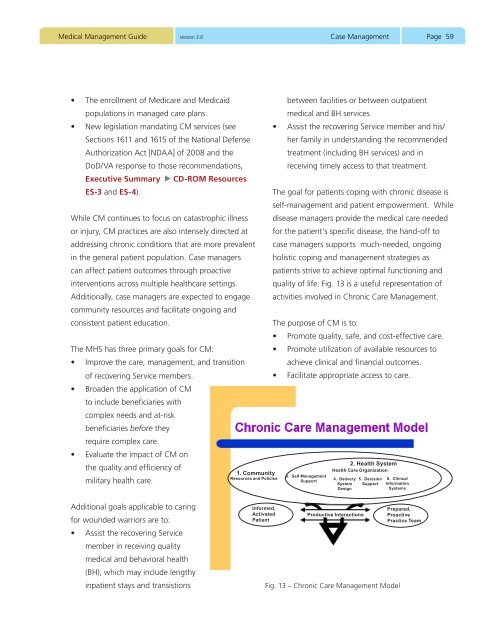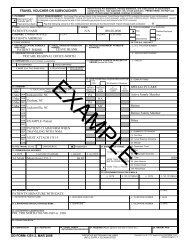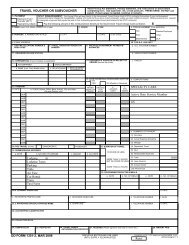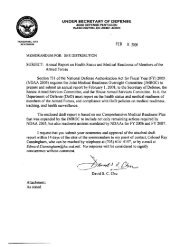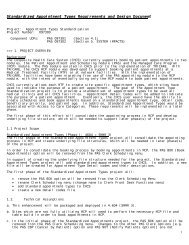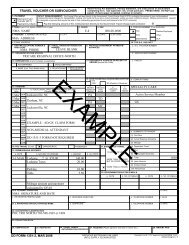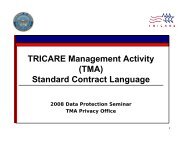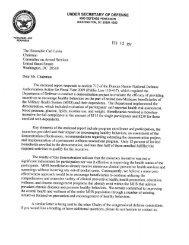Medical Management Guide, 2009, Version 3.0 - Tricare
Medical Management Guide, 2009, Version 3.0 - Tricare
Medical Management Guide, 2009, Version 3.0 - Tricare
- No tags were found...
Create successful ePaper yourself
Turn your PDF publications into a flip-book with our unique Google optimized e-Paper software.
<strong>Medical</strong> <strong>Management</strong> <strong>Guide</strong><strong>Version</strong> <strong>3.0</strong>Case <strong>Management</strong>Page 59• The enrollment of Medicare and Medicaidpopulations in managed care plans.• New legislation mandating CM services (seeSections 1611 and 1615 of the National DefenseAuthorization Act [NDAA] of 2008 and theDoD/VA response to those recommendations,Executive Summary CD-ROM ResourcesES-3 and ES-4).While CM continues to focus on catastrophic illnessor injury, CM practices are also intensely directed ataddressing chronic conditions that are more prevalentin the general patient population. Case managerscan affect patient outcomes through proactiveinterventions across multiple healthcare settings.Additionally, case managers are expected to engagecommunity resources and facilitate ongoing andconsistent patient education.The MHS has three primary goals for CM:• Improve the care, management, and transitionof recovering Service members.• Broaden the application of CMto include beneficiaries withcomplex needs and at-riskbeneficiaries before theyrequire complex care.• Evaluate the impact of CM onthe quality and efficiency ofmilitary health care.1. CommunityResources and Policiesbetween facilities or between outpatientmedical and BH services.• Assist the recovering Service member and his/her family in understanding the recommendedtreatment (including BH services) and inreceiving timely access to that treatment.The goal for patients coping with chronic disease isself-management and patient empowerment. Whiledisease managers provide the medical care neededfor the patient’s specific disease, the hand-off tocase managers supports much-needed, ongoingholistic coping and management strategies aspatients strive to achieve optimal functioning andquality of life. Fig. 13 is a useful representation ofactivities involved in Chronic Care <strong>Management</strong>.The purpose of CM is to:• Promote quality, safe, and cost-effective care.• Promote utilization of available resources toachieve clinical and financial outcomes.• Facilitate appropriate access to care.3. Self <strong>Management</strong>Support2. Health SystemHealth Care Organization4. DeliverySystemDesign5. DecisionSupport6. ClinicalInformationSystemsAdditional goals applicable to caringfor wounded warriors are to:• Assist the recovering Servicemember in receiving qualitymedical and behavioral health(BH), which may include lengthyinpatient stays and transistionsInformed,ActivatedPatientProductive InteractionsFig. 13 – Chronic Care <strong>Management</strong> ModelPrepared,ProactivePractice Team


